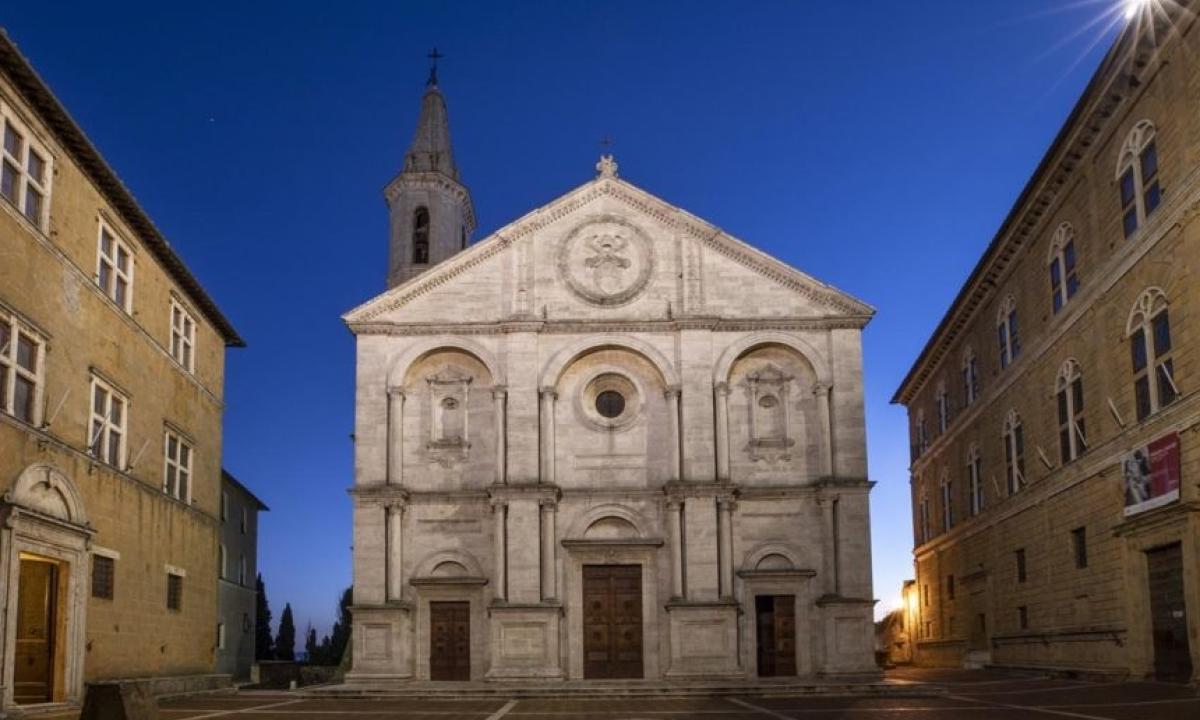

Orvieto and Siena: A Shared Cultural and Artistic Heritage
Orvieto and Siena share numerous historical and cultural connections that have left an indelible mark on their respective identities. One of the most evident, as pointed out by Pope Pius II, is the presence of two magnificent cathedrals dedicated to the Assumption of the Virgin Mary, both reflecting the same cultural and artistic matrix, that of Siena.
The construction of the Siena Cathedral, initiated in 1215, is considered to have significantly influenced the design and architecture of the Orvieto Cathedral, which began its construction in 1290. Notably, the Sienese architect and sculptor Lorenzo Maitani was tasked with designing the façade of Orvieto’s cathedral. Maitani’s work was later continued by Camaino da Crescentino, also from Siena, who oversaw the progress of the project. In fact, even the travertine used in the Orvieto Cathedral came from the nearby Sarteano, a powerful Orvietan castle that would later become a part of the Sienese domain.
In a further testament to the bond between the two cities, Francesco Tedeschini Piccolomini, a Sarteanese who would later become Pope Pius III, commissioned the creation of a library in the Orvieto Cathedral in 1492. This library was intended to house the books of his maternal uncle, Pope Pius II. Similarly, Antonio Albèri, the secretary and tutor of Francesco Tedeschini Piccolomini, had a similar library constructed in the Orvieto Cathedral, next to two masterpieces by the Sienese artist Simone Martini.
The influence of Sienese artists extended beyond Orvieto. The renowned Sienese painter Vecchietta, famous for his works in Siena and Pienza (including The Assumption of the Virgin in the Pienza Cathedral), also left his mark on Sarteano, where he created a panel painting of St. Roch and simultaneously worked on the construction of the new castle.
The Piccolomini family’s influence on Sarteano continued with the opening of several new construction projects, including the new façade of the Church of San Francesco. This new façade was almost a replica of the one at the Pienza Cathedral, further reinforcing the close ties between these two regions. It is no coincidence that churches dedicated to St. Francis can also be found in Pienza, Siena, and Orvieto, often displaying striking similarities in their design.
Beyond religious architecture, the two cities share a hidden underground heritage in the form of aqueducts, including the famous Pozzo di San Patrizio (St. Patrick’s Well) in Orvieto. This underground network further connects the two cities, revealing another layer of shared history.
The presence of the Templars in both cities is also noteworthy. Through churches and buildings, their influence can be traced, although this connection remains an area worthy of further exploration.
Looking further back in history, Orvieto and Siena share a common Etruscan origin. While both cities were founded by the Etruscans, only Orvieto can boast the legacy of a great Etruscan power: Velzna, which was destroyed and later rebuilt on its original site.
The shared history of Orvieto and Siena provides a rich tapestry of cultural, religious, and architectural connections, illustrating how these two cities, despite their differences, have grown together through the centuries. From cathedrals to underground aqueducts, from Renaissance libraries to the legacy of the Templars, the history of Orvieto and Siena is intertwined in ways that continue to be discovered and celebrated today.




